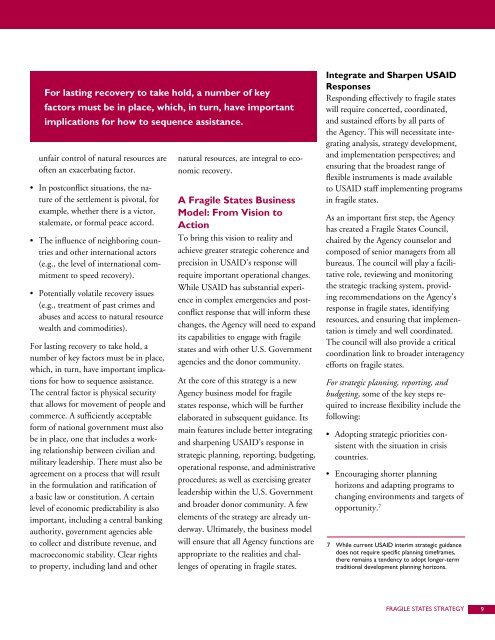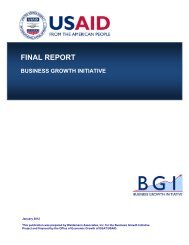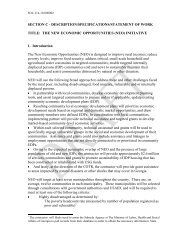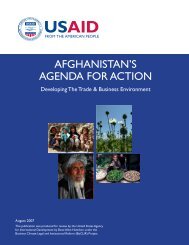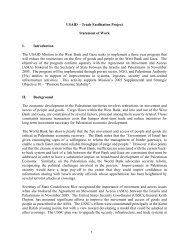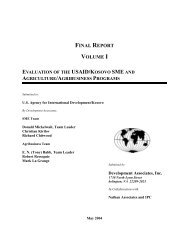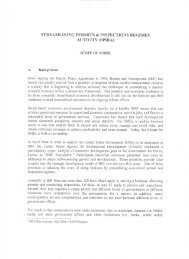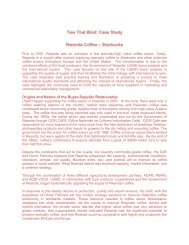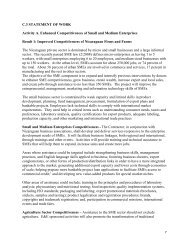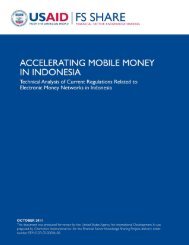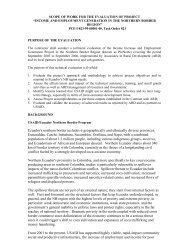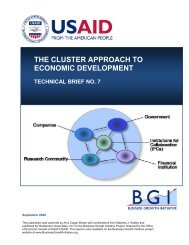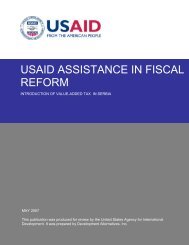USAID Fragile States Strategy - The Air University
USAID Fragile States Strategy - The Air University
USAID Fragile States Strategy - The Air University
- No tags were found...
You also want an ePaper? Increase the reach of your titles
YUMPU automatically turns print PDFs into web optimized ePapers that Google loves.
For lasting recovery to take hold, a number of keyfactors must be in place, which, in turn, have importantimplications for how to sequence assistance.unfair control of natural resources areoften an exacerbating factor.• In postconflict situations, the natureof the settlement is pivotal, forexample, whether there is a victor,stalemate, or formal peace accord.• <strong>The</strong> influence of neighboring countriesand other international actors(e.g., the level of international commitmentto speed recovery).• Potentially volatile recovery issues(e.g., treatment of past crimes andabuses and access to natural resourcewealth and commodities).For lasting recovery to take hold, anumber of key factors must be in place,which, in turn, have important implicationsfor how to sequence assistance.<strong>The</strong> central factor is physical securitythat allows for movement of people andcommerce. A sufficiently acceptableform of national government must alsobe in place, one that includes a workingrelationship between civilian andmilitary leadership. <strong>The</strong>re must also beagreement on a process that will resultin the formulation and ratification ofa basic law or constitution. A certainlevel of economic predictability is alsoimportant, including a central bankingauthority, government agencies ableto collect and distribute revenue, andmacroeconomic stability. Clear rightsto property, including land and othernatural resources, are integral to economicrecovery.A <strong>Fragile</strong> <strong>States</strong> BusinessModel: From Vision toActionTo bring this vision to reality andachieve greater strategic coherence andprecision in <strong>USAID</strong>’s response willrequire important operational changes.While <strong>USAID</strong> has substantial experiencein complex emergencies and postconflictresponse that will inform thesechanges, the Agency will need to expandits capabilities to engage with fragilestates and with other U.S. Governmentagencies and the donor community.At the core of this strategy is a newAgency business model for fragilestates response, which will be furtherelaborated in subsequent guidance. Itsmain features include better integratingand sharpening <strong>USAID</strong>’s response instrategic planning, reporting, budgeting,operational response, and administrativeprocedures; as well as exercising greaterleadership within the U.S. Governmentand broader donor community. A fewelements of the strategy are already underway.Ultimately, the business modelwill ensure that all Agency functions areappropriate to the realities and challengesof operating in fragile states.Integrate and Sharpen <strong>USAID</strong>ResponsesResponding effectively to fragile stateswill require concerted, coordinated,and sustained efforts by all parts ofthe Agency. This will necessitate integratinganalysis, strategy development,and implementation perspectives; andensuring that the broadest range offlexible instruments is made availableto <strong>USAID</strong> staff implementing programsin fragile states.As an important first step, the Agencyhas created a <strong>Fragile</strong> <strong>States</strong> Council,chaired by the Agency counselor andcomposed of senior managers from allbureaus. <strong>The</strong> council will play a facilitativerole, reviewing and monitoringthe strategic tracking system, providingrecommendations on the Agency’sresponse in fragile states, identifyingresources, and ensuring that implementationis timely and well coordinated.<strong>The</strong> council will also provide a criticalcoordination link to broader interagencyefforts on fragile states.For strategic planning, reporting, andbudgeting, some of the key steps requiredto increase flexibility include thefollowing:• Adopting strategic priorities consistentwith the situation in crisiscountries.• Encouraging shorter planninghorizons and adapting programs tochanging environments and targets ofopportunity. 77 While current <strong>USAID</strong> interim strategic guidancedoes not require specific planning timeframes,there remains a tendency to adopt longer-termtraditional development planning horizons.FRAGILE STATES STRATEGY 9


